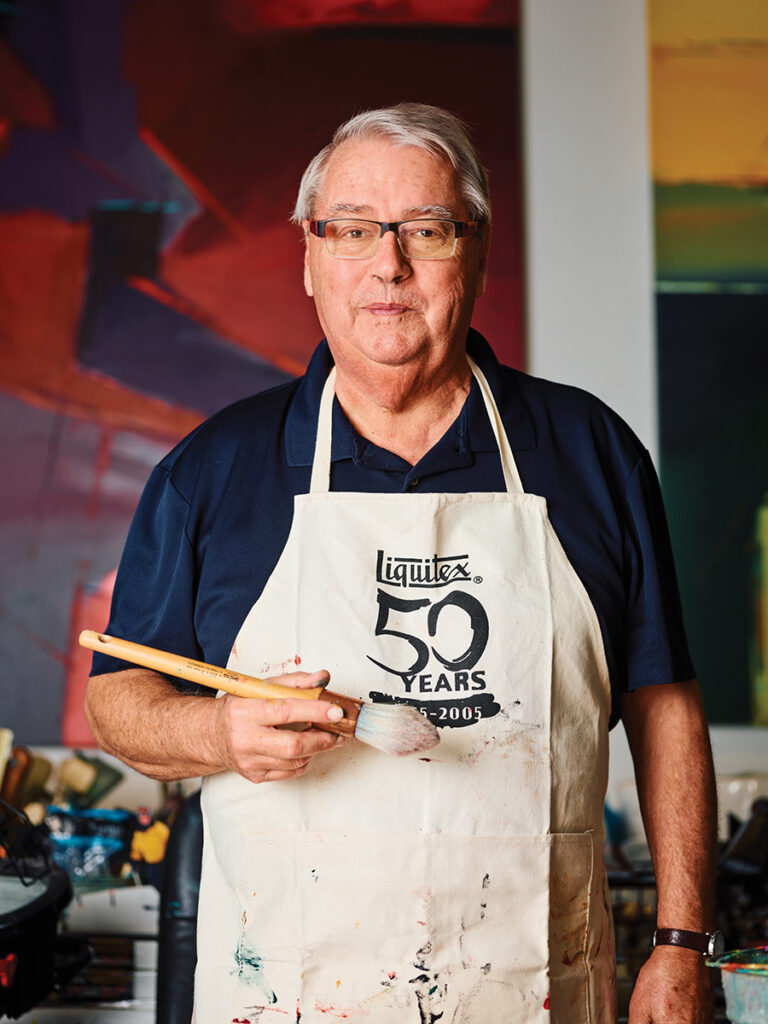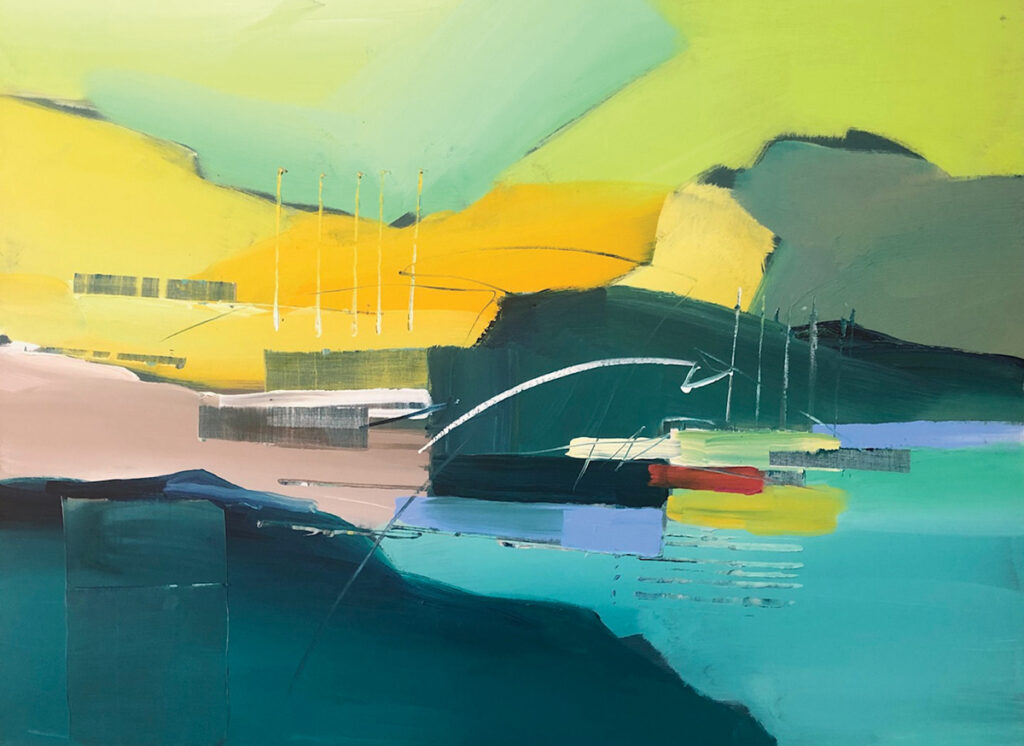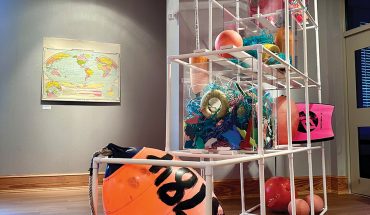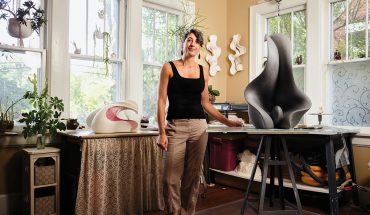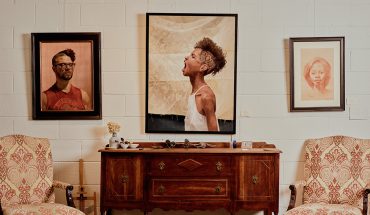This longtime Raleigh painter has used his skills and enthusiasm to uplift and expand Raleigh’s creative community.
by Katie Pate | photography by Joshua Steadman
Down an unassuming stone pathway on St. Mary’s Street, there’s a contemporary gray cement building tucked among trees and foliage. From one corner, a red wall cuts at an angle, accented with a giant, lime-green “R.” A lush, Japanese-style garden flanks the entrance to the studio featuring a koi pond, plants of many colors and two gray-and-white Persian cats waiting for visitors.
This is the home studio of artist Bob Rankin (he likes to call it his “houdio”). The front door opens up to a vast and rambling workspace, the ceilings punctuated by skylights, with a trove of visual treasures from an artistic career spanning more than 50 years.
Bins are stacked with tubes of acrylic paint and other supplies. House plants are scattered throughout, including a potted orange tree teeming with tiny fruits that Rankin makes into jam. And paintings of all sizes and subject matter hang neatly on the walls, with blank canvases stacked along the floor.
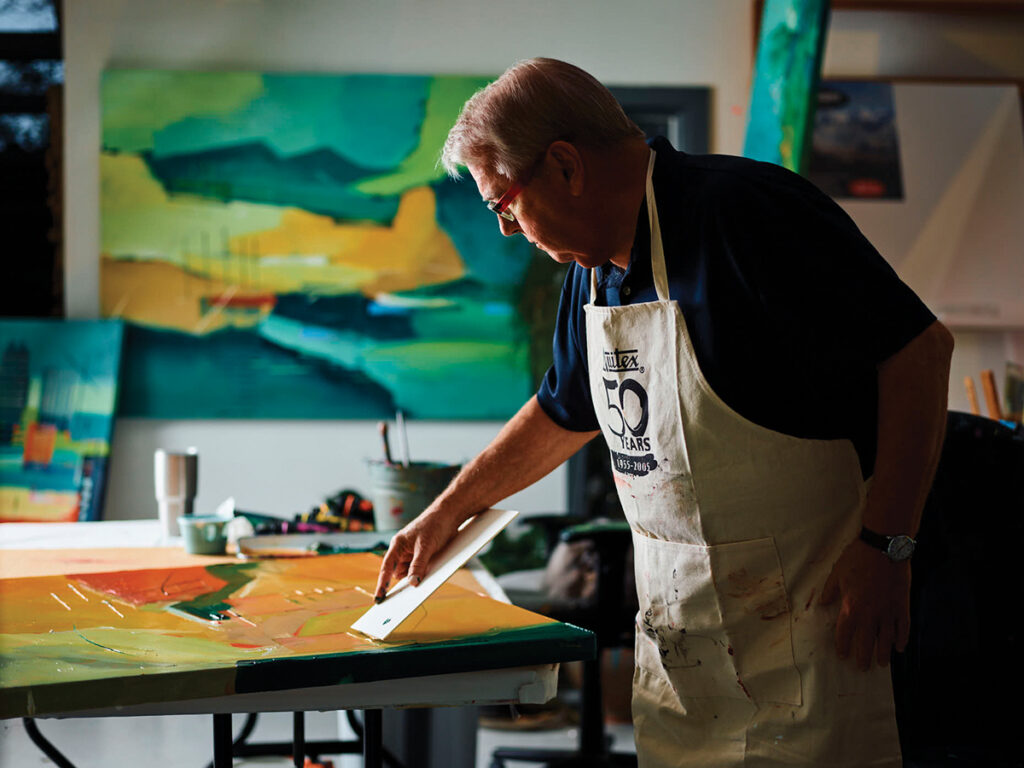
“I’m probably best known for these large-scale abstract works,” Rankin says, gesturing to several massive, colorful pieces on the wall.
Rankin’s portfolio of mostly acrylic paintings contains soothing and subtle responses to nature and international travels, often in imaginative interplays of color. Rankin has exhibited his work across the city, including in the Little Art Gallery and the Mahler Gallery, and his work has been shown throughout the United States.
Some personal highlights include appearing at the 1982 World’s Fair in Knoxville and internationally through an artist exchange program in Marrakesh, Morocco.
A lifelong Raleigh resident, Rankin grew up in the Five Points neighborhood and started honing his craft at Myrtle Underwood School. His third-grade teacher, Rose Melvin, inspired him to explore his creative talents when Rankin won the class’s Halloween art competition.
In return, he received the privilege of decorating a bulletin board while the other children did schoolwork. “It’s amazing how little gestures like that can make such a huge impact,” he says. (Rankin remained friends with Melvin until she passed away in 2013.)
As a student at Broughton High School, from which Rankin graduated in 1966, he drew and painted pieces that remain framed in his studio today. Rankin’s art teacher there, Alice Ehrlich, had a particular influence. “She encouraged originality and creativity in her students,” says Rankin.
He remembers field trips with Ehrlich and his classmates, like visiting a home that held what was believed to be the only original Picasso in Raleigh at the time. “She was enthusiastic in a way that was absolutely contagious,” he says.
But Rankin is known just as much for being an accomplished artist as he is for his ardent work as a teacher, philanthropist, mentor and community organizer.
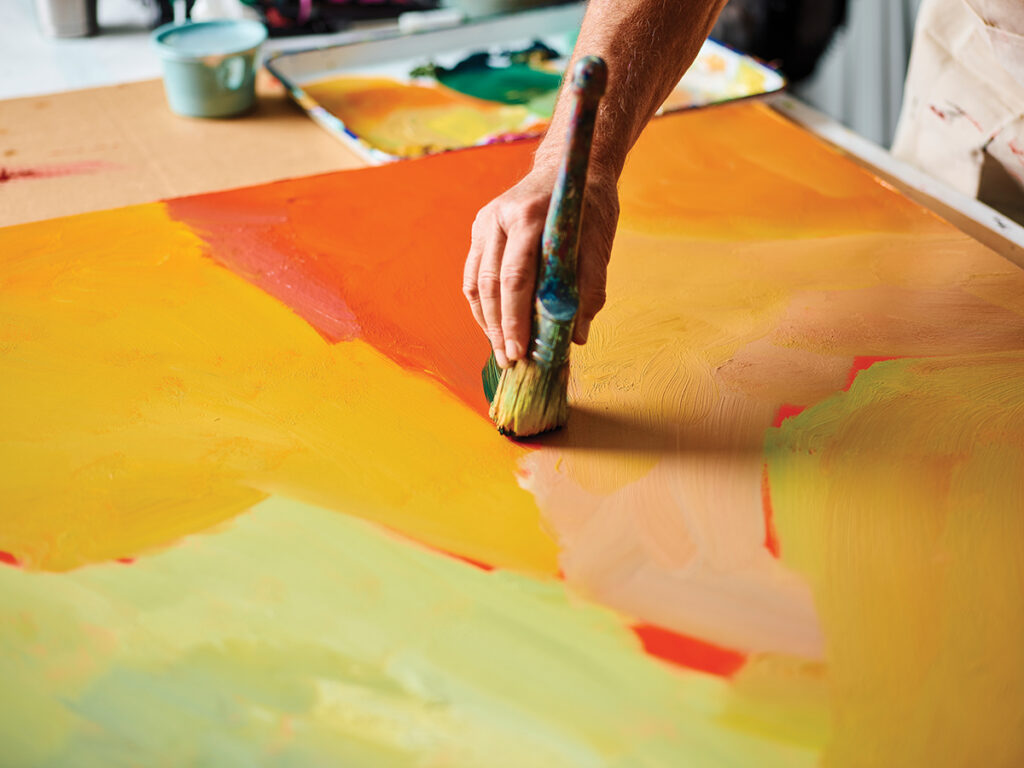
“He’s so generous and never asks for anything in return…And every time I look at his artwork it’s just so colorful and vibrant and beautiful.”
-Bearta Alchachar
After finishing the art education program at East Carolina University, he returned to Raleigh and began teaching art, first at Ligon Middle School, then at Sanderson, Garner and Millbrook High Schools. “I love the honesty of high school students; they don’t hold anything back and tell it like it is,” he says.
Rankin retired from teaching public school in 2000, but keeps up with many of the students he mentored and encouraged to pursue art-driven lives and careers. “There is so much talent in the area and I was able to tap into that as a teacher,” he says. In a recent performance, the Raleigh-raised writer and artist David Sedaris recognized Rankin for always making students feel special. “It really cemented the idea of how important teaching is,” Rankin says.
In the late 1970s, while working as an art teacher, Rankin had an idea to create an artist showcase and festival in The Village District (then known as Cameron Village).
“I walked into the office with lots of exuberance and told them, I have an idea for an art show,” Rankin remembers. Management agreed to publicize and host the event if Rankin would be the organizer. Art in the Village was born.
“It turned out to be a very successful show — so much so that it outgrew the Village,” says Rankin. He then reimagined the event to be hosted at Pullen Park as “Pullen Arts,” with conceptual art, dance and music throughout the park.
“For three or four years, the weather was perfect and people came out in droves,” he says. “Cars were lined up all the way to Channel Five to get in.”
The event was rebranded again, in 1980, as “Artsplosure” in Pullen Park. Then the City of Raleigh became involved in organizing the event, which was moved to its current home on Fayetteville Street.
By the mid-1980s, Artsplosure became too big for Rankin to organize as a volunteer, so he passed the baton to staff and continued his support as a board member.
Artsplosure has grown exponentially in the decades since, far beyond what Rankin describes as its “very grassroots” early years.
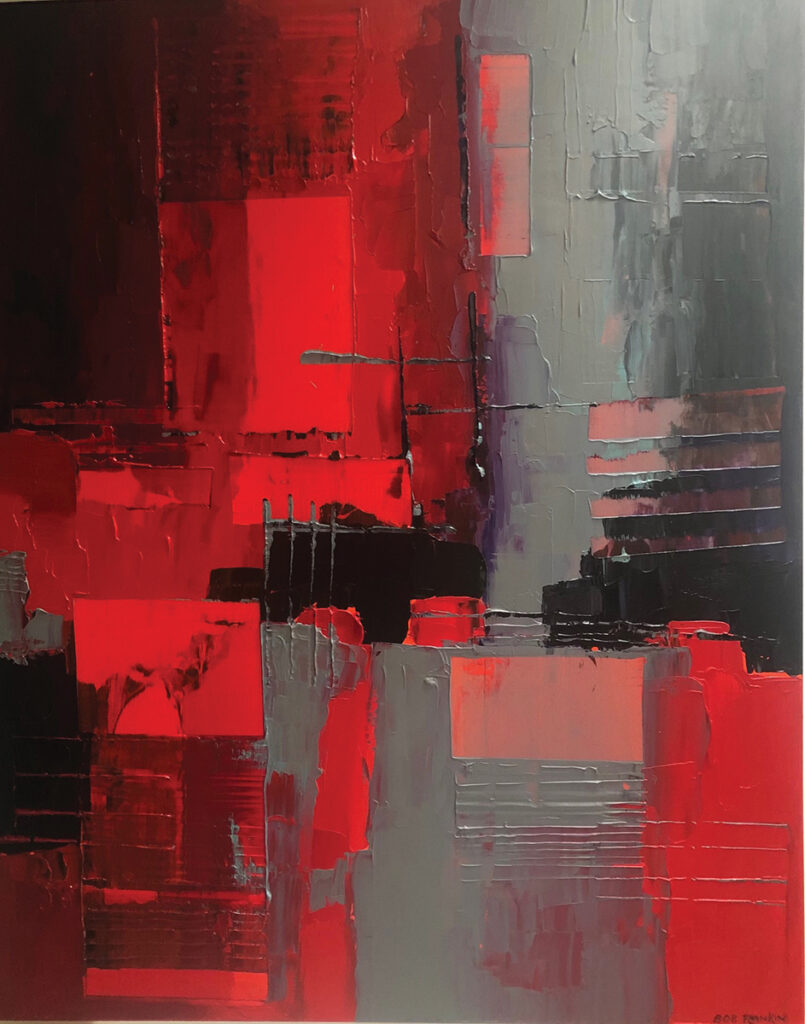
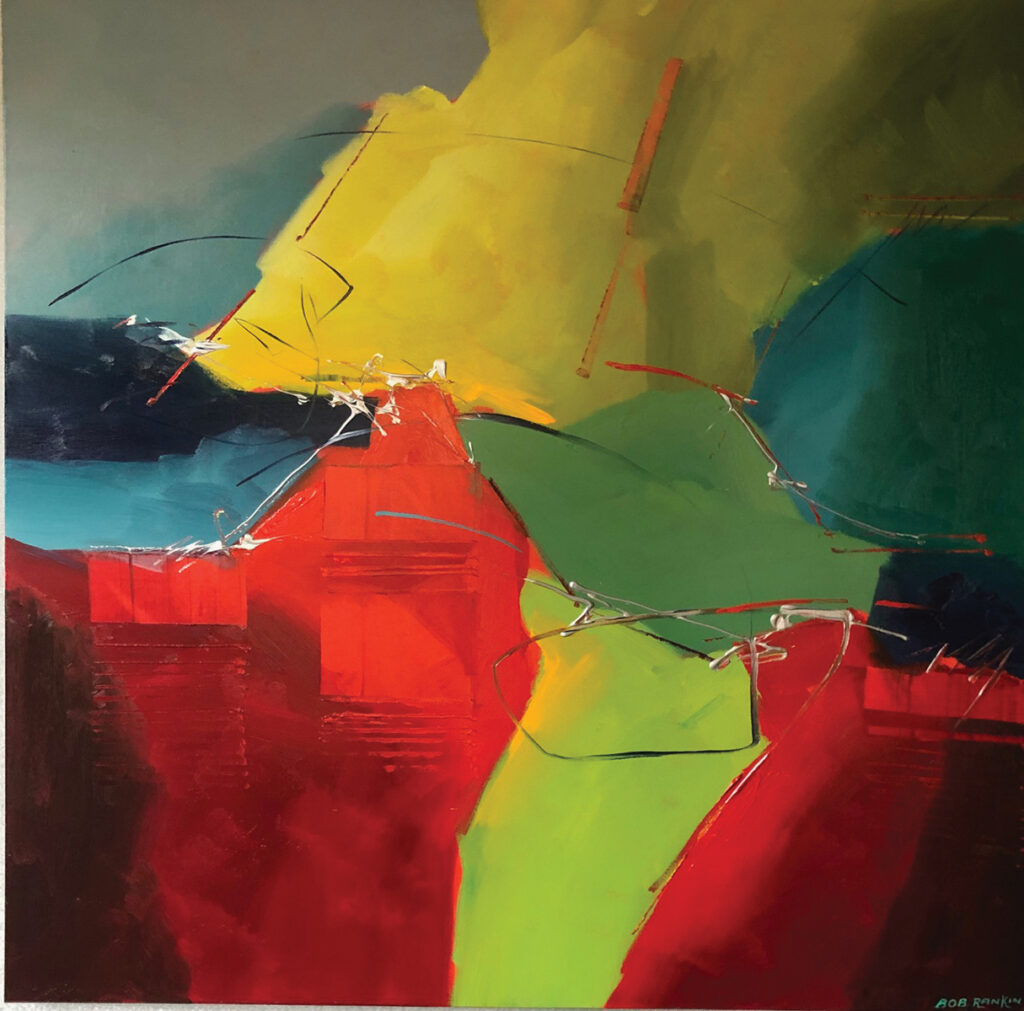
Rankin gives much of the credit to his friend and colleague Michael Lowder, who served as executive director for over 25 years before his retirement last year. As Raleigh grew, “we put an emphasis on raising brand awareness and bringing in even more artists,” says Lowder.
These days, Artsplosure brings tens of thousands of patrons to downtown Raleigh each May and continues to expand its programming and connection-making. The organization has contributed to and co-hosted an impressive lineup of events, including the inaugural IBMA Bluegrass Live! event, the African American Cultural Festival, First Night Raleigh and Live it Up!, Hillsborough Street’s annual event. In recent years, Artsplosure worked with Dreamville Music Festival to bring local arts and crafts vendors to the internationally attended event.
In addition to his continued work with Artsplosure, “I’ve been on most every major board that has anything to do with art in Raleigh,” he laughs, including the Visual Arts Exchange, Raleigh Art People, Artspace and the Raleigh Arts Commission.
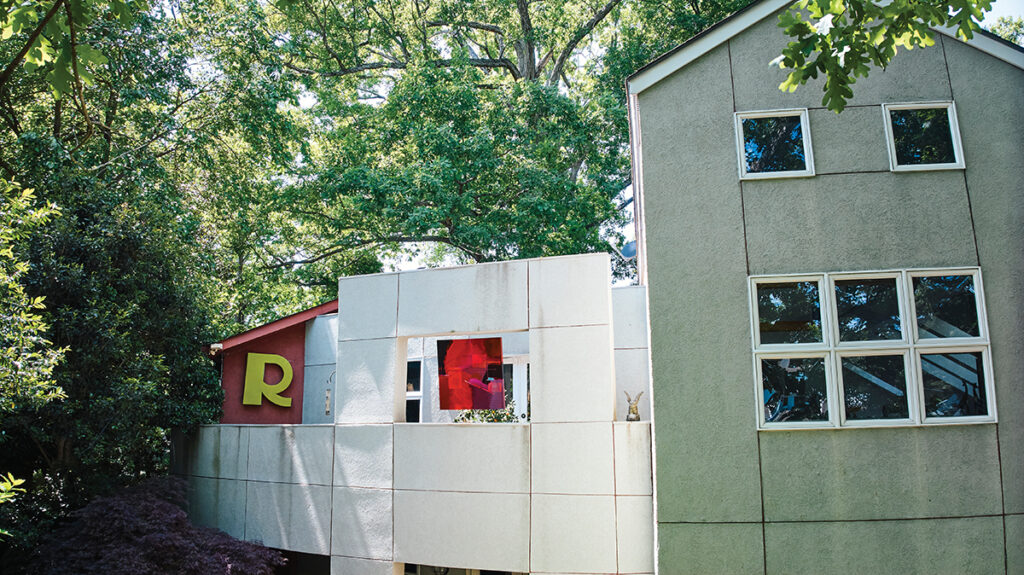
One of Rankin’s greatest community achievements is helping to launch the Raleigh Public Art and Design Board, the city’s advisory body that reviews and manages public art projects and programs. In 2009, Rankin was a member of the Raleigh Arts Commission. He teamed up with its chair, Laura Raynor, to establish a program within the city government focused on public art projects.
“We developed guidelines and a public art policy for the city of Raleigh,” Raynor says. “It was a privilege to be involved in the building up of the arts program because it’s really a shining star in our city.”
These days, Rankin continues to be involved in many arts organizations — and is constantly making more art. “I have a little bit of talent, but I can outwork anyone,” he says. “The busier I am, the better I am.”
Lowder agrees: “He is so prolific and just creates all the time. He continues to be inspired by everyday life.”
While Raleigh is home base, many of Rankin’s creations are inspired by his travels. A teaching gig in Italy, for example, yielded a series of landscapes based on the surrounding countryside. Recent travels to Iceland inspired a collection reflecting the country’s fantastically varied geography. “I love the power and sensuality of red,” he says of a piece capturing his impression of a stream of lava he witnessed at a volcano.
Rankin often donates his work to organizations like The Caring Community, The Walk for Hope and the Raleigh International Festival. “He’s so generous and never asks for anything in return,” says Bearta Alchacar, the organizer of global programming like the Raleigh International Festival, noting that he’s donated art for the event for more than 30 years. “And every time I look at his artwork it’s just so colorful and vibrant and beautiful.”
Rankin has received the East Carolina University Leo Jenkins Award and the Raleigh Medal of Arts. He’s also been recognized by a plethora of organizations as Best Artist in the Triangle and is an inductee into the Raleigh Hall of Fame and the Wake County Public School System Hall of Fame, among many others.
Despite the accolades and international inspiration, Rankin remains humble, committed to arts advocacy, and rooted in Raleigh. “This city has been awfully good to me, and I want to share what I’ve been given,” he says.
This article originally appeared in the June issue of WALTER magazine.

